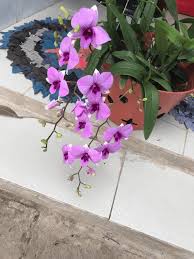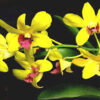# Effective Watering Formulas for Dendrobium Orchids

Dendrobium orchids are renowned for their vibrant blooms and adaptability, making them a popular choice for both novice and experienced gardeners. However, proper watering is crucial to ensuring their health and vitality. This comprehensive guide will explore effective watering formulas tailored specifically for Dendrobium orchids, covering various methods, schedules, and techniques that can help you provide the optimal moisture your orchids need to thrive.
## Table of Contents
1. **Introduction to Dendrobium Orchids**
– 1.1 Overview of Dendrobium Species
– 1.2 Importance of Watering
2. **Understanding Watering Needs**
– 2.1 Water Requirements
– 2.2 Factors Influencing Watering Frequency
3. **Water Quality**
– 3.1 Types of Water
– 3.2 pH Levels
– 3.3 Water Temperature
4. **Watering Methods**
– 4.1 Soaking Method
– 4.2 Top Watering
– 4.3 Misting
– 4.4 Automated Systems
5. **Watering Schedule**
– 5.1 Seasonal Considerations
– 5.2 Growth Stage Watering Needs
– 5.3 Signs of Overwatering and Underwatering
6. **Watering Formulas**
– 6.1 General Watering Formula
– 6.2 Nutrient-Enhanced Watering
– 6.3 Rainwater Harvesting
– 6.4 DIY Orchid Watering Solutions
7. **Common Watering Mistakes**
– 7.1 Overwatering
– 7.2 Underwatering
– 7.3 Using Improper Watering Tools
8. **Conclusion**
– 8.1 Summary of Key Points
– 8.2 Final Thoughts on Watering Dendrobium Orchids
—
## 1. Introduction to Dendrobium Orchids
### 1.1 Overview of Dendrobium Species
Dendrobium is one of the largest genera of orchids, encompassing over 1,800 species that vary widely in appearance, growth habits, and blooming times. Known for their stunning flowers that can come in various colors and shapes, Dendrobium orchids are found in many tropical and subtropical regions around the world.
### 1.2 Importance of Watering
Watering is one of the most critical aspects of orchid care, especially for Dendrobium species. Proper moisture levels are essential for:
– **Root Health**: Ensuring roots absorb nutrients effectively.
– **Growth**: Promoting healthy growth during active growing seasons.
– **Blooming**: Facilitating flower development and longevity.
Understanding how to water Dendrobium orchids effectively will contribute significantly to their overall health and blooming success.
## 2. Understanding Watering Needs
### 2.1 Water Requirements
Dendrobium orchids thrive in well-draining environments, requiring a careful balance of moisture:
– **Growing Season**: During active growth (spring and summer), Dendrobiums need more frequent watering to support new growth and flowering.
– **Dormant Season**: In fall and winter, their water needs decrease significantly, requiring less frequent watering.
### 2.2 Factors Influencing Watering Frequency
Several factors influence how often you should water your Dendrobium orchids:
– **Temperature and Humidity**: Higher temperatures and humidity levels increase evaporation, necessitating more frequent watering.
– **Potting Medium**: The type of potting mix affects moisture retention; for example, bark mixes drain faster than sphagnum moss.
– **Container Size**: Larger pots retain moisture longer than smaller ones.
## 3. Water Quality
### 3.1 Types of Water
The quality of water used for orchids plays a significant role in their health. Here are common types of water:
– **Tap Water**: Generally acceptable, but check for high levels of chlorine or salts.
– **Distilled Water**: Free of impurities, making it an excellent choice for orchids, but lacks minerals.
– **Rainwater**: Ideal for orchids, as it is naturally soft and free of chemicals.
### 3.2 pH Levels
Dendrobium orchids prefer slightly acidic to neutral pH levels (around 5.5 to 6.5). Regularly check the pH of your water to ensure it meets these requirements.
### 3.3 Water Temperature
Watering with water at room temperature (around 68°F to 72°F or 20°C to 22°C) is best. Cold water can shock the roots, while hot water can damage them.
## 4. Watering Methods
### 4.1 Soaking Method
The soaking method involves submerging the pot in water, allowing the roots to absorb moisture effectively:
– **Process**: Place the pot in a basin of water for 15-30 minutes, ensuring that the potting mix is thoroughly saturated.
– **Frequency**: This method is particularly useful during the growing season.
### 4.2 Top Watering
Top watering is a straightforward method suitable for most orchid setups:
– **Process**: Use a watering can or hose to apply water directly to the potting medium. Make sure water flows through the drainage holes to prevent waterlogging.
– **Consideration**: Avoid letting water sit in the saucer beneath the pot.
### 4.3 Misting
Misting can help increase humidity around your orchids:
– **Process**: Lightly spray water onto the leaves and surrounding area using a spray bottle.
– **Frequency**: Misting is beneficial in dry environments, especially during the growing season.
### 4.4 Automated Systems
Automated watering systems can be a convenient solution for busy gardeners:
– **Drip Irrigation**: This system delivers water directly to the roots at scheduled intervals.
– **Mist Systems**: Automated misting systems can maintain humidity levels in the greenhouse or growing area.
## 5. Watering Schedule
### 5.1 Seasonal Considerations
Adjust your watering schedule based on seasonal changes:
– **Spring and Summer**: Water more frequently, usually every 5-7 days, depending on environmental conditions.
– **Fall and Winter**: Reduce watering to every 10-14 days, allowing the potting medium to dry out more between waterings.
### 5.2 Growth Stage Watering Needs
Dendrobium orchids have different water needs depending on their growth stage:
– **Active Growth**: During this phase, increase watering to support robust growth and flowering.
– **Dormant Phase**: Water less frequently, as the plant conserves energy.
### 5.3 Signs of Overwatering and Underwatering
Understanding the signs of water stress is essential:
– **Overwatering**: Yellowing leaves, mushy roots, and root rot are signs of excessive moisture.
– **Underwatering**: Wrinkled leaves, shriveled pseudobulbs, and a dry potting medium indicate that the orchid needs more water.
## 6. Watering Formulas
### 6.1 General Watering Formula
A simple formula for watering Dendrobium orchids is to water them thoroughly when the potting medium is dry to the touch, typically every 5-7 days during active growth.
### 6.2 Nutrient-Enhanced Watering
Enhancing your watering routine with nutrients can promote healthier growth:
– **Fertilizer Solutions**: Dilute a balanced orchid fertilizer (20-20-20) in your watering can, using one-quarter to one-half of the recommended strength.
– **Application**: Water your orchids with this nutrient solution every two to four weeks during the growing season.
### 6.3 Rainwater Harvesting
Collecting rainwater is an environmentally friendly and effective method:
– **Collection**: Use barrels or containers to capture rainwater from your roof or garden.
– **Benefits**: Rainwater is naturally soft and free from chemicals, making it ideal for orchids.
### 6.4 DIY Orchid Watering Solutions
You can create your own watering solutions for Dendrobium orchids:
– **Homemade Fertilizer Tea**: Steep compost or worm castings in water for a few days, then dilute the mixture and use it to water your orchids.
– **Liquid Seaweed**: Dilute liquid seaweed in water for a nutrient-rich solution that supports root development and overall health.
## 7. Common Watering Mistakes
### 7.1 Overwatering
Overwatering is one of the most common mistakes made by orchid growers:
– **Symptoms**: Root rot, yellowing leaves, and stunted growth.
– **Prevention**: Always allow the potting medium to dry out slightly between waterings.
### 7.2 Underwatering
Underwatering can also pose risks to Dendrobium orchids:
– **Symptoms**: Wilting, shriveling leaves, and poor growth.
– **Prevention**: Regularly check the potting medium for moisture, especially during hot weather.
### 7.3 Using Improper Watering Tools
Using the wrong tools can affect how effectively you water your orchids:
– **Improper Nozzle**: A watering can with a fine nozzle helps distribute water evenly, preventing oversaturation.
– **Inadequate Drainage**: Ensure pots have drainage holes to avoid waterlogging.
## 8. Conclusion
### 8.1 Summary of Key Points
Effective watering is vital for the health and growth of Dendrobium orchids. Understanding their specific watering needs, the quality of water, and the methods for applying it will significantly improve your chances of success. Additionally, monitoring for signs of water stress and making adjustments based on seasonal changes will help ensure your orchids
thrive.
### 8.2 Final Thoughts on Watering Dendrobium Orchids
By following the guidelines outlined in this comprehensive guide, you can create a customized watering plan that meets the unique needs of your Dendrobium orchids. Whether you’re a beginner or an experienced grower, mastering the art of watering will lead to lush, vibrant blooms and a healthy, thriving orchid collection. Happy gardening!

